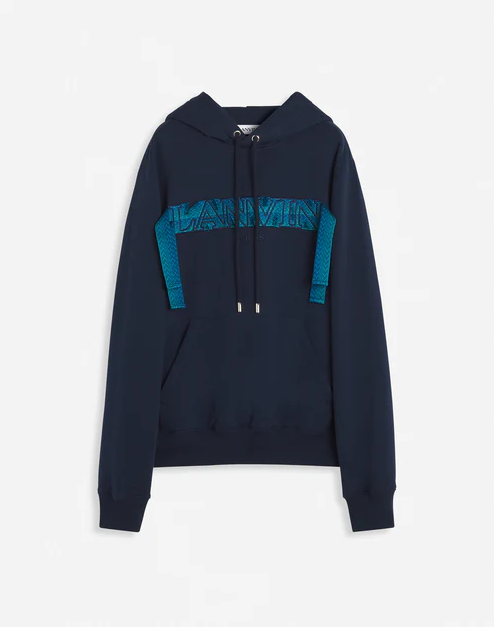Lanvin is not just a luxury fashion house; it is a living embodiment of French elegance and innovation. Founded in 1889 by Jeanne Lanvin, the brand began as a humble millinery shop on Rue du Faubourg Saint-Honoré in Paris. Jeanne’s natural flair for design and her keen eye for detail soon attracted a loyal clientele, and her creations started to draw attention beyond the city. What began as a venture into women’s hats quickly evolved into full collections of haute couture for women and children, marking the start of a legendary fashion empire.
Jeanne Lanvin’s early success came from her ability to understand the needs of Parisian women. Her designs blended refined femininity with practicality, and her talent allowed her to capture the spirit of the era. Over time, her house expanded into men’s fashion, fragrances, and home décor, building a rich portfolio that made Lanvin a comprehensive lifestyle brand.
The Rise of Lanvin as a Fashion Empire
By the 1920s, Lanvin Sneakers was one of the most recognized names in Parisian couture. What set it apart was not only the craftsmanship but also the visionary approach that Jeanne had toward fashion. She introduced coordinated family wardrobes and incorporated Art Deco influences into her designs. These innovations propelled Lanvin beyond the limitations of traditional fashion houses of the time.
Lanvin’s popularity continued to grow throughout Europe and internationally. The brand was particularly known for its exquisite embroidery, luxurious fabrics, and signature color palettes. Jeanne even developed a custom shade of blue inspired by Fra Angelico frescoes, famously known as “Lanvin Blue.” This color became synonymous with the brand’s identity and remains iconic in its visual representation.
Perfume as an Extension of Elegance
Lanvin’s legacy is not confined to clothing. In 1927, the house launched “Arpège,” a fragrance that became as legendary as its couture. Inspired by Jeanne Lanvin’s daughter, Marguerite, the perfume was an ode to maternal love and feminine grace. The bottle’s elegant black-and-gold design became instantly recognizable and set a benchmark in the luxury fragrance industry.
Over the years, Lanvin continued to release several acclaimed fragrances, reinforcing its reputation as a luxury lifestyle brand. Fragrance became a core component of Lanvin’s identity, and to this day, Arpège remains a celebrated classic, often compared to other timeless scents in the high-end market.
The Evolution in the Modern Fashion World
Following Jeanne Lanvin’s passing in 1946, the fashion house underwent several leadership changes. The brand navigated through decades of fashion’s shifting tides, maintaining its elegance while embracing contemporary trends. Although the maison experienced ups and downs, each creative director brought a unique vision that helped rejuvenate its identity without compromising its heritage.
The early 2000s marked a notable resurgence under the creative direction of Alber Elbaz. Appointed in 2001, Elbaz was instrumental in bringing Lanvin back into the spotlight. His work was celebrated for its modern take on femininity, fluid silhouettes, and refined sophistication. Elbaz’s tenure breathed new life into the house, gaining critical acclaim and celebrity endorsement across the globe.
His designs often blended classic Parisian romance with a minimalist edge, which resonated with a younger demographic while still appealing to the house’s traditional clientele. Under his leadership, Lanvin became one of the most talked-about brands on international runways, regaining its relevance in a highly competitive market.
The Impact of Lanvin on Global Fashion
Lanvin’s influence extends far beyond Paris. It has played a pivotal role in shaping what we understand as haute couture and ready-to-wear luxury. Designers from various backgrounds have cited Jeanne Lanvin’s work as a source of inspiration for its originality and timelessness. The house’s focus on quality craftsmanship, intricate embroidery, and elegant tailoring has become a blueprint for modern luxury fashion.
The brand’s approach to design has also reflected changing societal values, including the evolving role of women in public life. Lanvin’s ability to adapt its identity while maintaining its core values has made it an enduring symbol of sophistication.
In recent years, the house has diversified its aesthetic to include edgier, streetwear-influenced collections, showing its willingness to evolve with younger audiences while still holding on to its roots in elegance and tradition.
Challenges and Rebirth in the Contemporary Market
Like many heritage brands, Lanvin has faced the challenge of staying relevant in a fast-changing industry. With increasing pressure from fast fashion and digital-first brands, it has had to reinvent its strategy for the modern consumer. This meant not only updating its product offerings but also embracing new marketing channels, digital platforms, and global retail strategies.
Despite its challenges, Lanvin has shown resilience. With new creative directors and evolving collections, the house continues to be a serious contender in global fashion weeks. It focuses on fusing contemporary aesthetics with its classic DNA, making it appealing to both legacy clients and Gen Z fashion enthusiasts.
The brand has also expanded into accessories, footwear, and collaborations with artists and other fashion houses, creating momentum in an increasingly crowded luxury market.
Lanvin Today and Tomorrow
Today, Lanvin represents more than just a fashion label. It symbolizes enduring creativity, historical significance, and a vision that transcends fleeting trends. While remaining headquartered in Paris, Lanvin continues to impact fashion on a global scale through flagship boutiques, seasonal runway shows, and a growing digital presence.
Looking forward, the brand appears poised for continued evolution. With increasing interest in sustainable fashion and inclusive design, Lanvin has opportunities to redefine luxury in a way that speaks to modern values. Its rich archive and heritage provide a deep well of inspiration, allowing it to innovate while staying anchored in authenticity.
The future of Lanvin will likely balance between bold innovation and a reverence for the artistry that built the house over 135 years ago. As new audiences discover the label, Lanvin’s role as a torchbearer of French fashion excellence remains as relevant as ever.










Leave a Reply